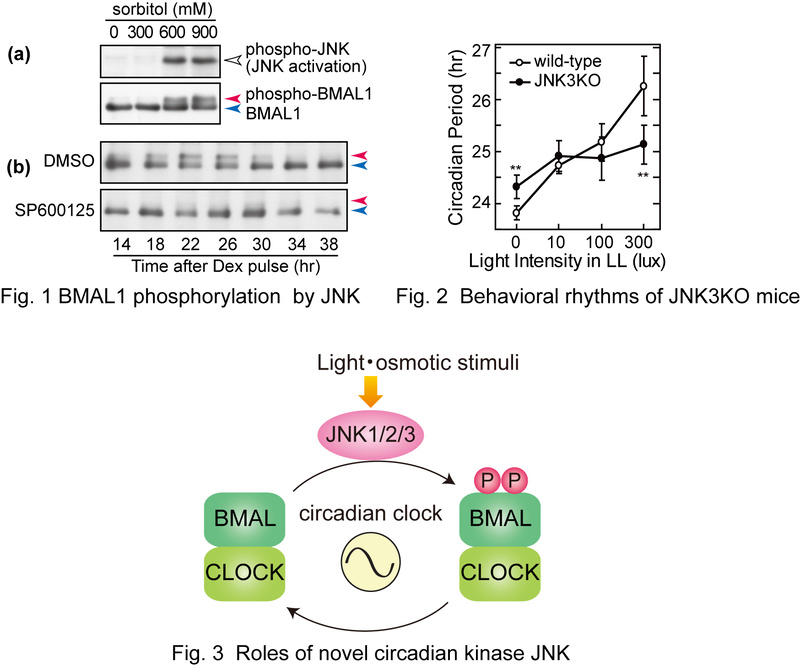JNK regulates the photic response of the mammalian circadian clock.
In mammals, clock genes and their products form transcriptional/translational feedback loops, in which BMAL1 and CLOCK transactivate a series of genes including Per and Cry through E-box elements. Translated PER and CRY proteins suppress the function of BMAL1-CLOCK complex. In the molecular cycling, the clock proteins are regulated by posttranslational modifications such as phosphorylation, in terms of activity, stability, localization and interaction. The posttranslational regulation of mammalian clock proteins has been assigned a time-keeping function but seems to have more essential roles. Here, we show that c-Jun N-terminal kinase (JNK), identified by inhibitor screening of BMAL1 phosphorylation at Ser520/Thr527/Ser592, confers dynamic regulation on the clock. JNK activation by hyperosmotic stimuli caused phosphorylation of BMAL1-CLOCK complex in the fibroblasts (Fig. 1a), and activated JNK isoforms directly phosphorylates BMAL1 and CLOCK proteins in vitro. Inhibition or knockdown of JNKs abrogates BMAL1 phosphorylation (Fig. 1b) and lengthens circadian period in the cells. Mice deficient for neuron-specific isoform JNK3 exhibited longer free-running period in the constant darkness (KO; 24.1 ± 0.1 hr, WT; 23.6 ± 0.2 hr). In the Jnk3-deficient mice, a remarkable reduction of the phase-shift was observed when 30-min light pulse was given at subjective night. The locomotor rhythms were insensitive to intensity variance of constant light, deviating from Aschoff's rule (Fig. 2). Thus, JNKs transmit light signals to BMAL1-CLOCK complex and control the oscillation speed and the phase response of the master clock governing the behavioral rhythms (Fig. 3).
Program member
Yoshitaka Fukada (Department of Biophysics and Biochemistry, Graduate School of Science)

